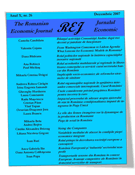Abstract:
Consumers' suspicion towards traditional marketing techniques, led marketers to try the virtual media communication form called disguise advertising as other forms of messages. The examples include making advertisements resemble news items (Aditya 2001; Levine 1993; Richards 1992), the in fomercials in the '90s that disguise advertising as TV programs (Levine 1993; Lacher and Rotfeld 1994), making celebrities use the products in their real lives or in films (Aditya 2001), feeding media information using public relations(PR) activities like bribing journalists with gifts and making TV stations use the footages from press releases (Gillin 2006). Because of the prevalence of virtual media, the marketing practices that conceal the real sources (marketers) with disguised sources have posed both ethical and policy concerns. This article proposed a new typology that covered the comprehensive scope of disguised marketing practices, discussed the deceptive nature of this marketing technique from the consumer behavioral view- points, and conducted a 2 x 3 experiment to test the hypothesized relationships. The results suggest that an implicit message, disguised source’s preference, is likely to be conveyed in covert marketing and thus results in high a deceptive tendency.
